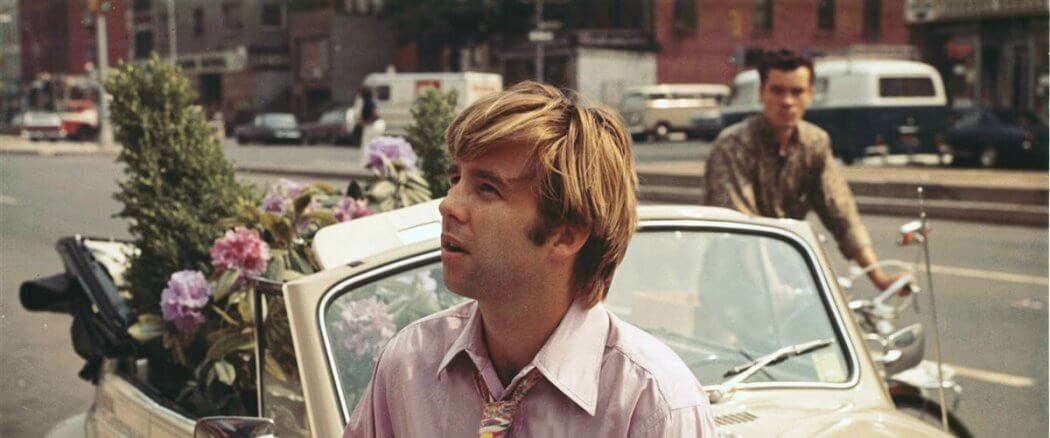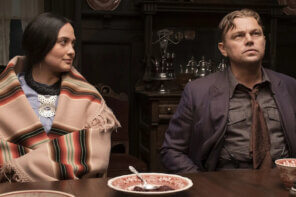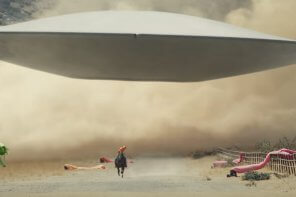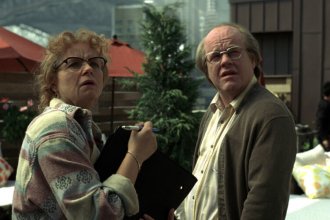“If you didn’t sweat so much nobody’d take you for a landlord,” Fanny (Diana Sands) tells Elgar (Beau Bridges). “You could pass for a human being.” Actually, The Landlord does pass for a human being, in how it says one thing, means another, thinks another, but all with a body language that doesn’t require translation. One could make a similar comment, I suppose, about many films from the New Wave and second Golden Age; eras in which the previously standard style of storytelling and editing shifted — out of rebellion, but also, it seems, out of a desire to more honestly reflect our divided and fluid consciousness.
The Landlord both represents and transcends that time, with an incredible discipline, or defect — the critics disagreed upon its release — of forging together very different trajectories and tones. The result is a bit like Zui Quan, the martial arts form that appears drunken, but is prepared to strike, right where it will hurt the most.
This Old Ghetto Area
Elgar Enders is a 29-year-old “blue-eyed wonder” that still lives at home and has “never done anything.” Our first full view of him is in a lounge chair on a huge lawn, being served a beverage by a black servant. So far he has lived without a spine — all that sitting in lawn chairs probably hasn’t helped — and the beginning of the film discovers him trying to grow one. “Everybody wants his own home, you know?” He smiles between swigs of brandy. “And I’ve never had a place of my own…money’s never been the problem. So, shit, I bought this house. Actually, it’s a, it’s a tenement house. It’s in this old ghetto area.”
“This old ghetto area” is Park Slope, Brooklyn. In the early ‘50s the neighborhood was vacated by upper class whites in favor of the suburbs. It reconstituted as working class white, but by the mid-‘60s, that mixed with African-American and Latino, or rather, didn’t mix, resulting in gang fights and efforts at segregation. This is the scene into which Elgar enters, in a VW Bug filled with flowering potted trees; there’s a prescient shot of him smelling a plucked flower and tossing it out of the car. Elgar is a plucker, and by the end of The Landlord he will have plucked up a lot.
Little More Than a Conqueror
“The strongest drive we have as a true life force is to gain territory,” expounds Elgar. There is another, equally strong drive, which we all know, but either way, it’s conquest, and Elgar is little more than a conqueror. After moving in, he becomes involved with multiple women, incites a psychotic break, and literally paints the walls white. I’m trying to summarize while protecting the characters’ identities and the film’s plot points, because I don’t want to ruin any of The Landlord’s best moments; they’re so specific, so holistic, it’s like watching a brilliant pop and lock dancer, where every twitch of a part is noticeable because of its connection to the whole body.
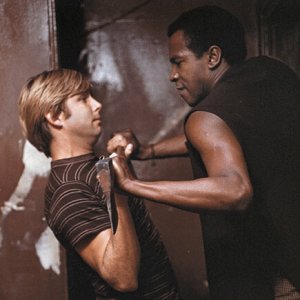 And the body definitely needs all the parts, because none is spare. The joy and agony of the film is how much we need each other and how much we don’t know that. In one giddy scene, Elgar’s mother, Joyce (Lee Grant) spontaneously arrives to help decorate and, finding him out, is invited to lunch by a tenant, Marge (Pearl Bailey). Soon after settling into Marge’s apartment, a “ruthless” alcoholic beverage is served, and as the two are warmed by it, they warm to each other. There are no confessions, no absolution; it is simply a feast of ham hocks, greens, and carbonated liquor on a table of fellowship you will never forget, largely thanks to Grant and Bailey, who are irresistible. The tragedy is not really that the communion was impossible without alcohol, but that afterwards Joyce wobbles out of the building and shouts for her black chauffeur like he’s a dog.
And the body definitely needs all the parts, because none is spare. The joy and agony of the film is how much we need each other and how much we don’t know that. In one giddy scene, Elgar’s mother, Joyce (Lee Grant) spontaneously arrives to help decorate and, finding him out, is invited to lunch by a tenant, Marge (Pearl Bailey). Soon after settling into Marge’s apartment, a “ruthless” alcoholic beverage is served, and as the two are warmed by it, they warm to each other. There are no confessions, no absolution; it is simply a feast of ham hocks, greens, and carbonated liquor on a table of fellowship you will never forget, largely thanks to Grant and Bailey, who are irresistible. The tragedy is not really that the communion was impossible without alcohol, but that afterwards Joyce wobbles out of the building and shouts for her black chauffeur like he’s a dog.
That sort of paradox punctuates the entire film, including a dinner scene with Elgar’s family I cannot figure out, featuring a punchline which, if it hadn’t been written by a black person, would be deeply unsettling. No, it’s still deeply unsettling. But this ability to arrest, to hold us captive in a flash of truth, is the film’s strength. The source of that strength, I believe, is the script, an adaptation of Kristin Hunter’s novel by Bill Gunn, inspired by the independence of its characters, whose decisions truly determine the story, while feeling almost predestined. Such is the trademark of good writing and, to varying extents, our lives.
A Dreadful Need
Filmmaking is collaboration, and this film is blessed with collaborators. Though The Landlord is director Hal Ashby’s debut, his previous training as editor is invaluable. Gordon Willis’ lighting, as always, is a divine palette, utilizing the whole range and manipulating every degree of it. Each performance, leading and supporting, is excellent, though Lee Grant, Pearl Bailey, and Diana Sands are exceptional. But everyone is taking cues from Bill Gunn, a maestro who deserves to be watched.
In another of Gunn’s shrewd screenplays, Ganja & Hess, he writes that “the result of individual thought is applicable only to itself. There is a dreadful need in man to teach. It destroys the pure instinct to learn. The navigator learns from the stars. The stars teach nothing…The eyes shame the pages of any book.” Viewing The Landlord from this vantage, it is a kind of postmodern parable, in that it tells a tale and trusts the audience to teach itself. But as Gunn knows all too well, there is only so much you can learn in separate classrooms.

